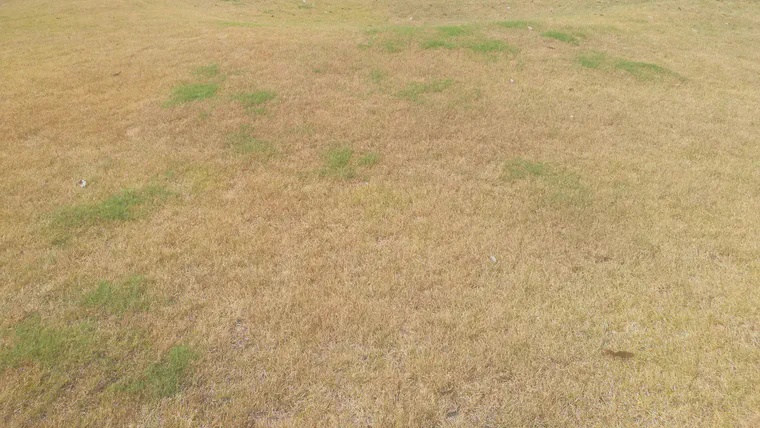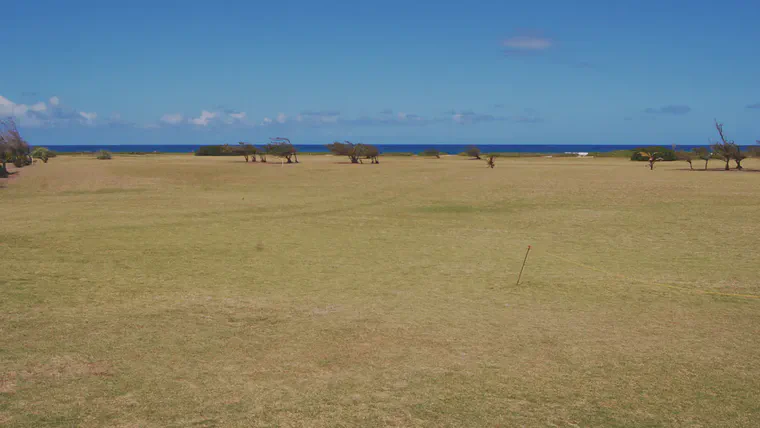Drought performance of warm-season turfgrasses
St. Augustinegrass (Stenotaphrum secundatum) performed the best, and zoysiagrass the worst, with bermudagrass and seashore paspalum in-between, in this three year study.
Here’s an interesting new article by Katuwal et al.: Multilocational screening identifies new drought-tolerant, warm-season turfgrasses. This article describes the results for four species: bermudagrass, St. Augustinegrass, seashore paspalum, and zoysiagrass.
From the introduction, this is what the project is all about:
A recent federal grant emphasizing the development of drought-tolerant, warm-season cultivars provided an opportunity for southern turfgrass breeders to evaluate a large set of diverse germplasm for drought tolerance at multiple locations across the southern United States … One of the primary goals of this collaborative effort was to rapidly and efficiently identify broadly adapted genotypes with superior drought tolerance.
The article reports on the performance of 47 total genotypes in a three year study under an automatic rainout shelter at Griffin, Georgia. There were thirteen bermudagrasses—ten experimental drought tolerant selections and three standards (Celebration, TifTuf, and Tifway). There were thirteen zoysiagrasses—ten experimental drought tolerant selections and three standards (Empire, Palisades, and Zeon). Thirteen St. Augustinegrasses, and eight seashore paspalums (three standards and five experimentals).
The grasses were evaluated at the start of and then through three dry-down periods, in 2015, 2016, and 2017. The dry-down periods were implemented like this:
Plots were watered three times weekly for a total of 2.5 cm per week throughout the study except during induced dry-down periods when all water was withheld. Before starting a dry-down period, an additional 2.5 cm of irrigation was applied using a traveling boom to ensure uniform soil moisture at field capacity. During dry-down periods, the automatic rainout shelter was activated. Precipitation was sensed using a tipping-bucket-type sensor, and during rainfall events the shelter would cover plots and remained closed for 1 h after rainfall ceased to ensure no water reached plots. Duration of dry-down periods did vary by year and were chosen in attempts to maximize observed genotypic differences in drought response among entries. Dry-down periods were initiated on 24 Aug. 2015, 29 Aug. 2016, and 6 July 2017 and lasted for 25, 32, and 24 d, respectively.
A variety of measurements were made during the dry-down periods, and they started with an initial measurement at the start, prior to dry down. Then the same measurement was made at the end of the dry-down period—the time of drought stress. During drought, visual turf quality declines. Green cover declines. With measurements at the start, and at the end, the researchers could report the percent change from the initial value, which shows how much the grasses declined in performance when drought stress was imposed.

Zoysiagrass stood out, and not in a good way.
When comparing the four warm-season turfgrass species by averaging across genotypes within individual species, zoysiagrass always ranked in the lowest statistical group for all variables measured including [percent of initial turf quality, percent of initial normalized difference vegetation index, percent of initial dark green color index, percent of initial green cover, and number of days of dry-down required to reduce green cover to 50% of the initial value] … These findings suggest that zoysiagrass was the most drought sensitive of the warm-season species evaluated in this study.
Which grasses performed the best?
In contrast to zoysiagrass, St. Augustinegrass mostly ranked in the top group for measured canopy responses under drought stress, suggesting St. Augustinegrass was the most drought-tolerant species in this evaluation. Bermudagrass and seashore paspalum had intermediate drought response evidenced by their intermediate canopy responses under stress conditions. Many previous studies reported relatively poor performance of zoysiagrass under water limited conditions compared with other warm-season grasses such as bermudagrass, St. Augustinegrass, and seashore paspalum.
I was surprised that St. Augustinegrass did better than bermudagrass, and then I remembered I had seen it out-competing bermudagrass when unirrigated in Hawaii.

These research results are useful if one is trying to maximize turf quality while minimizing water use. Eventually, this project will identify some new cultivars that make this easier to accomplish.